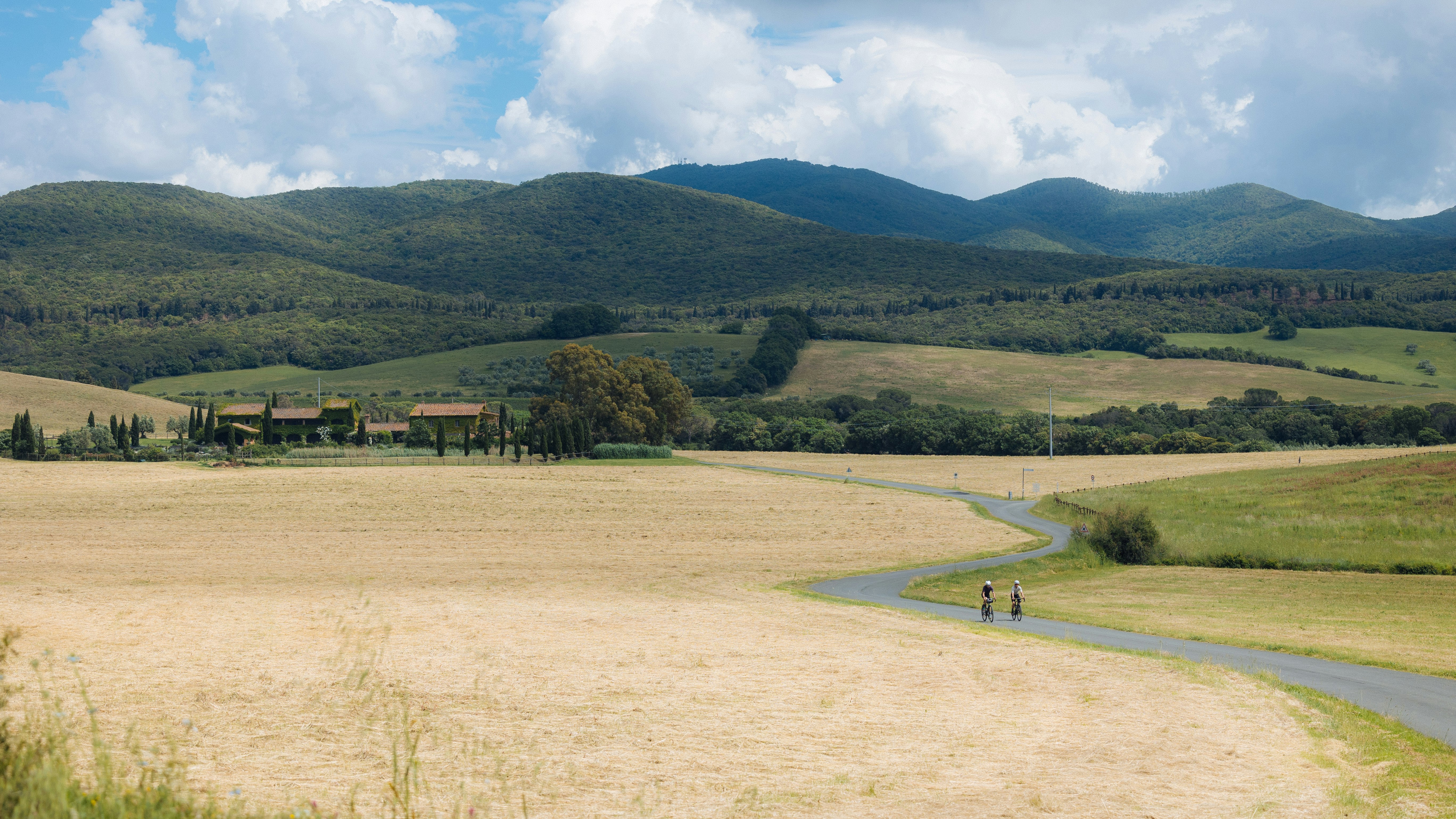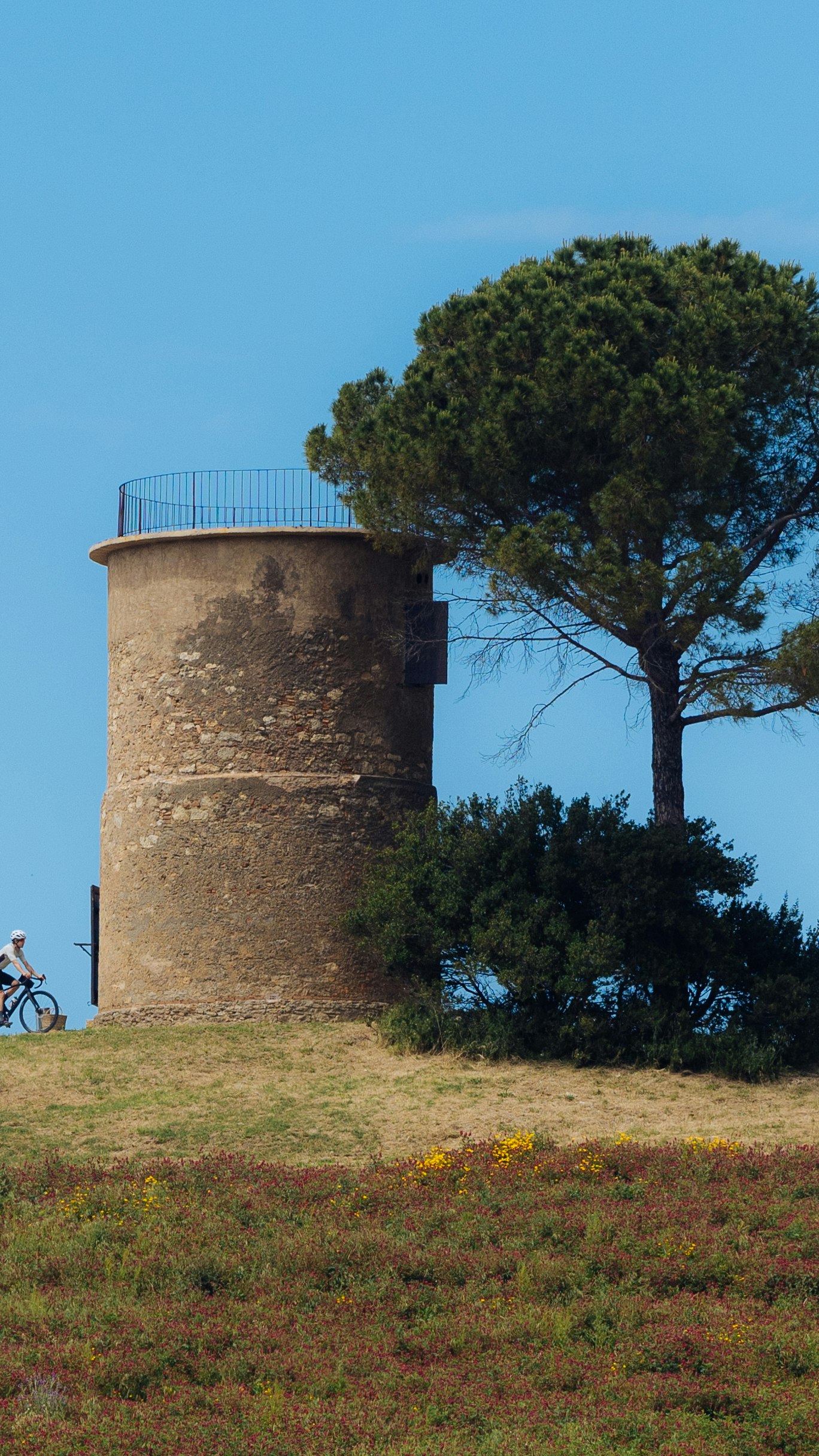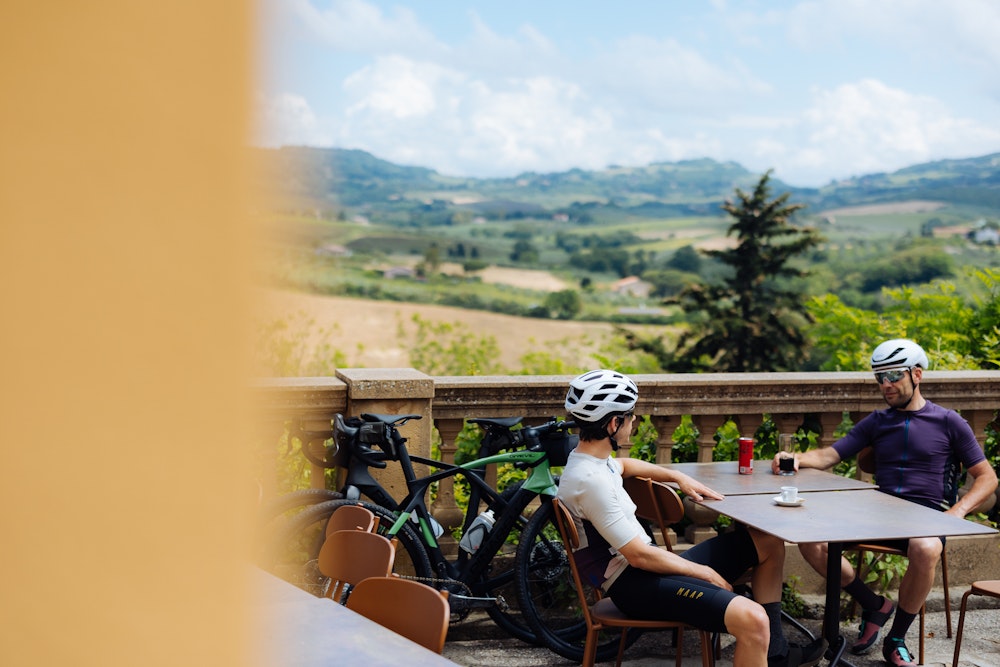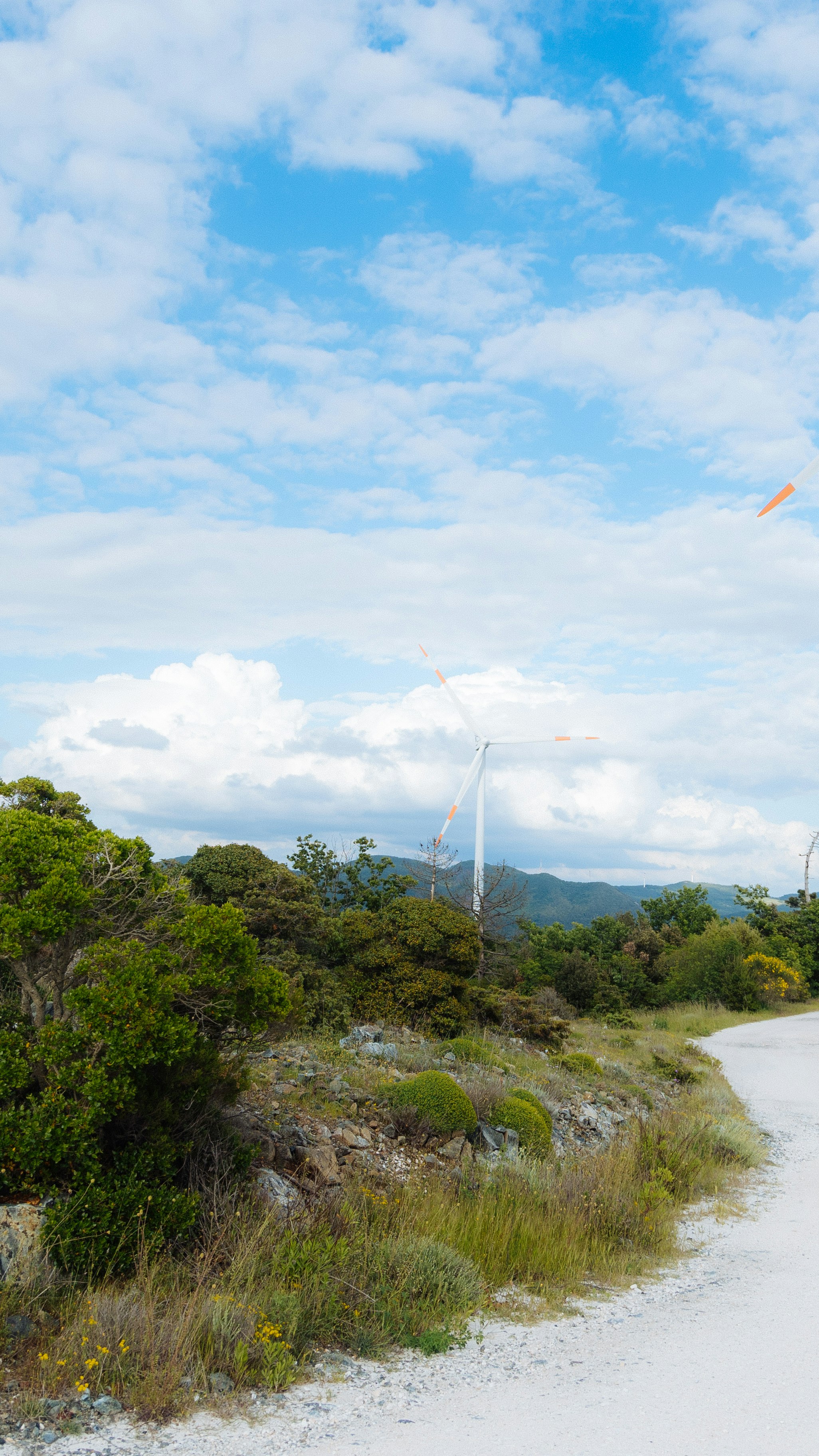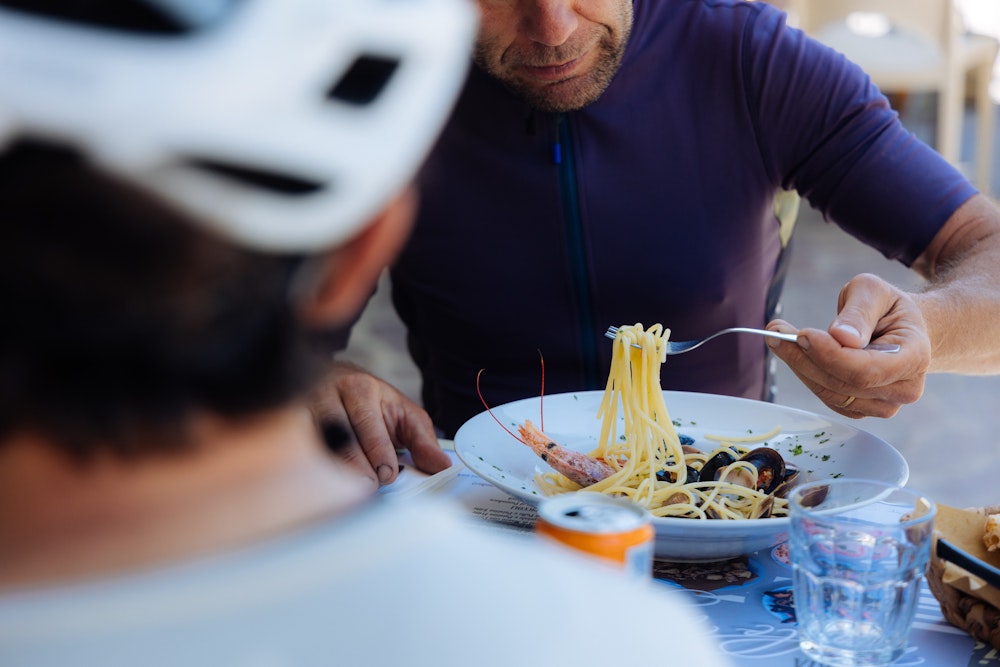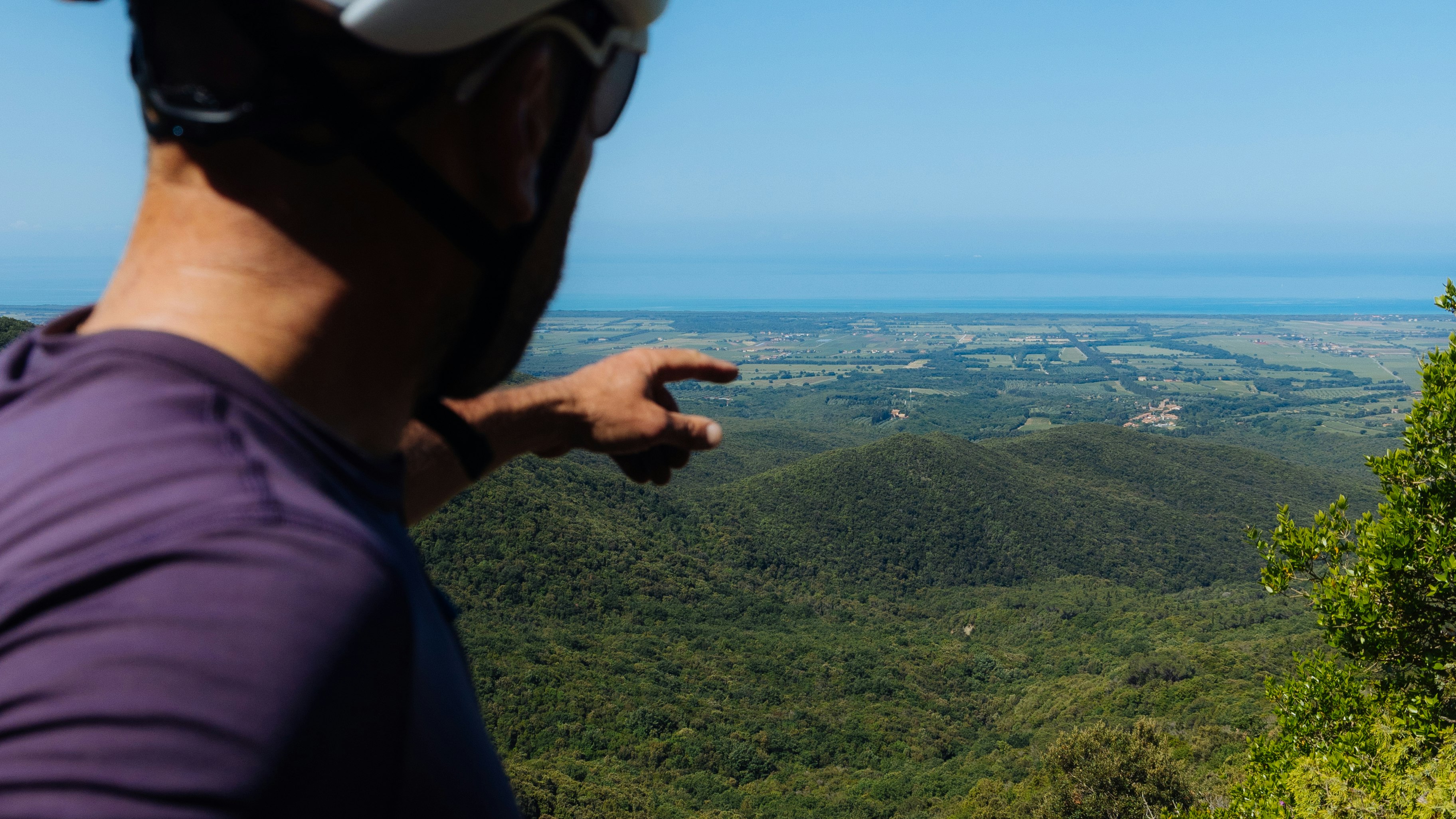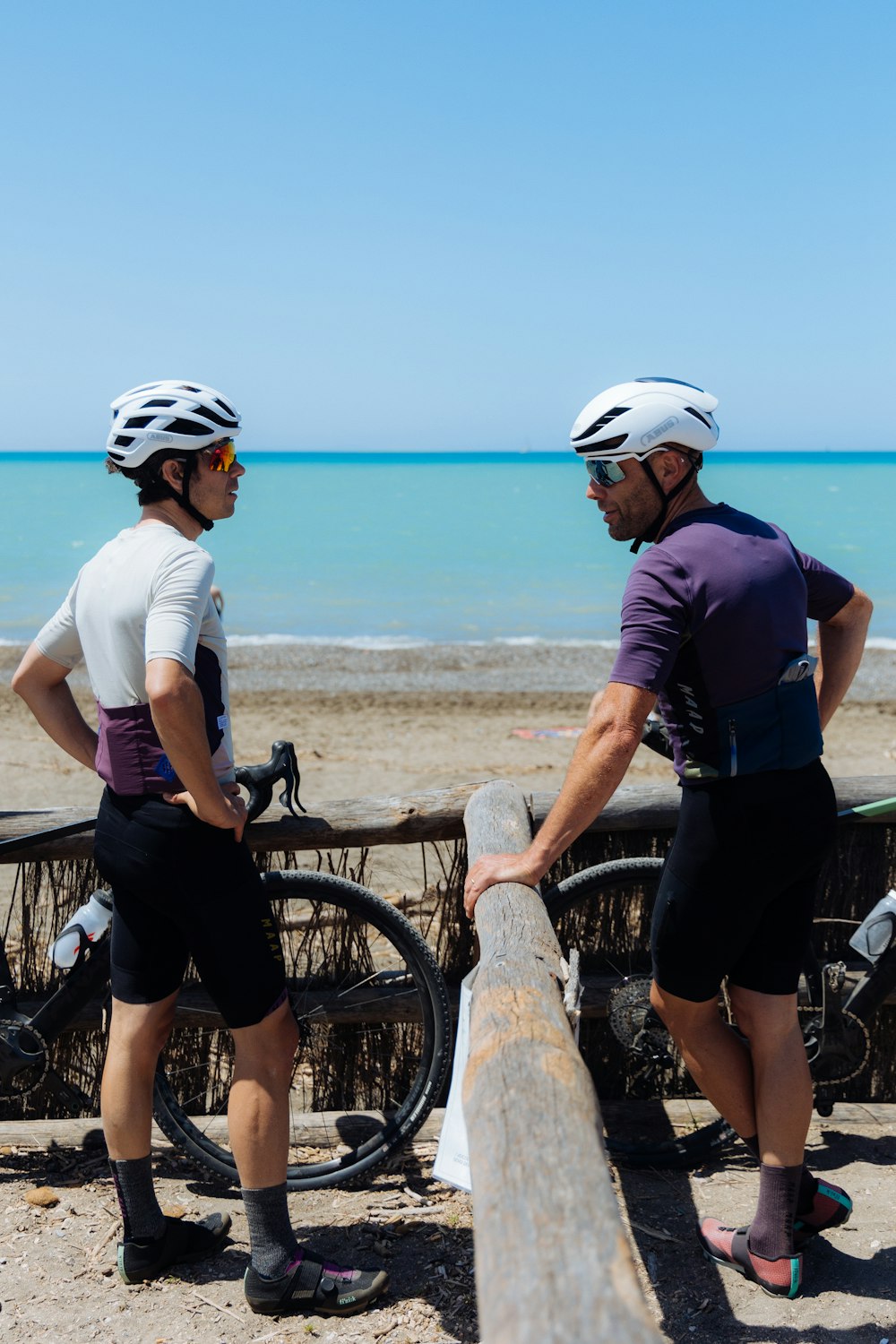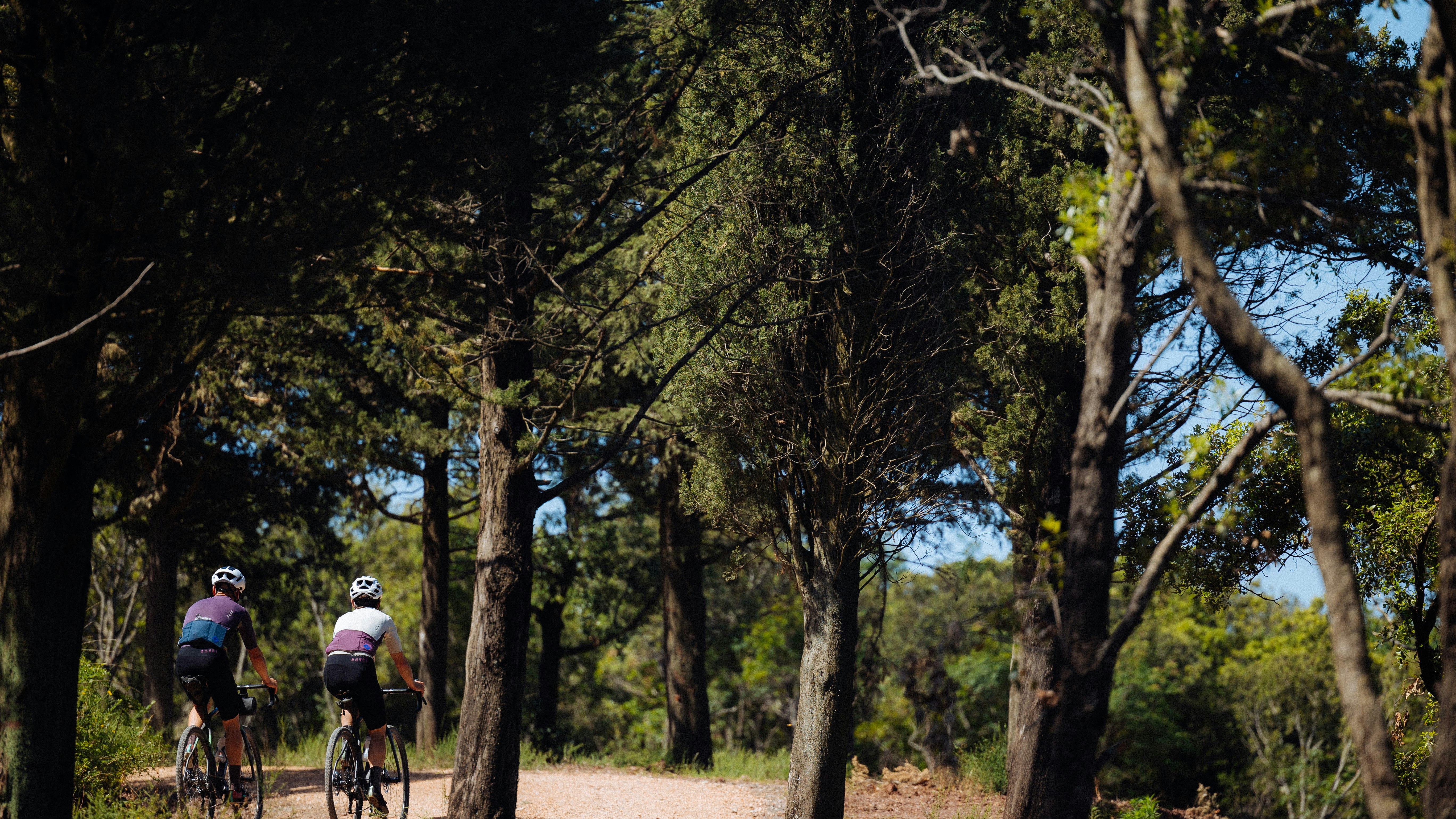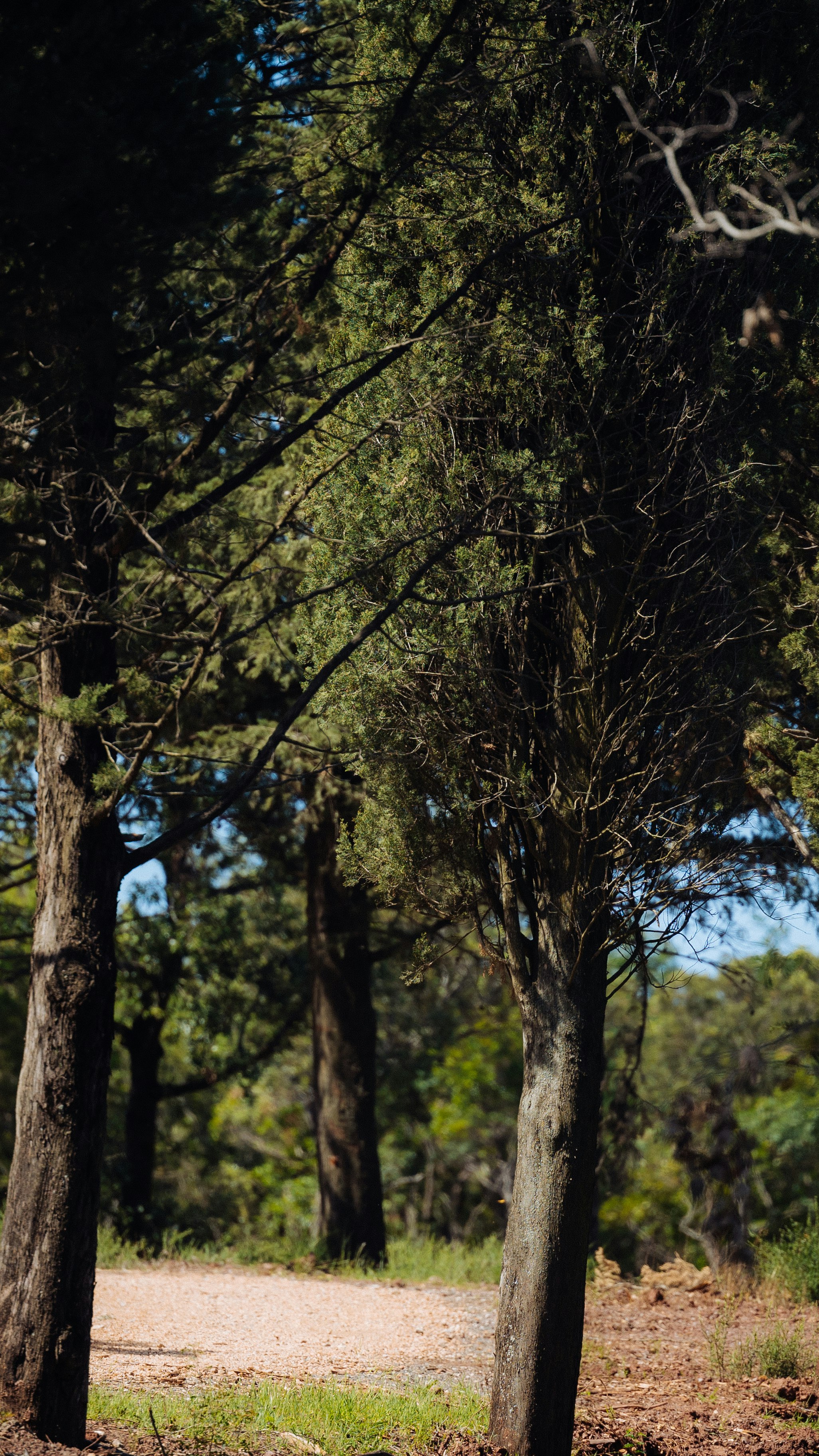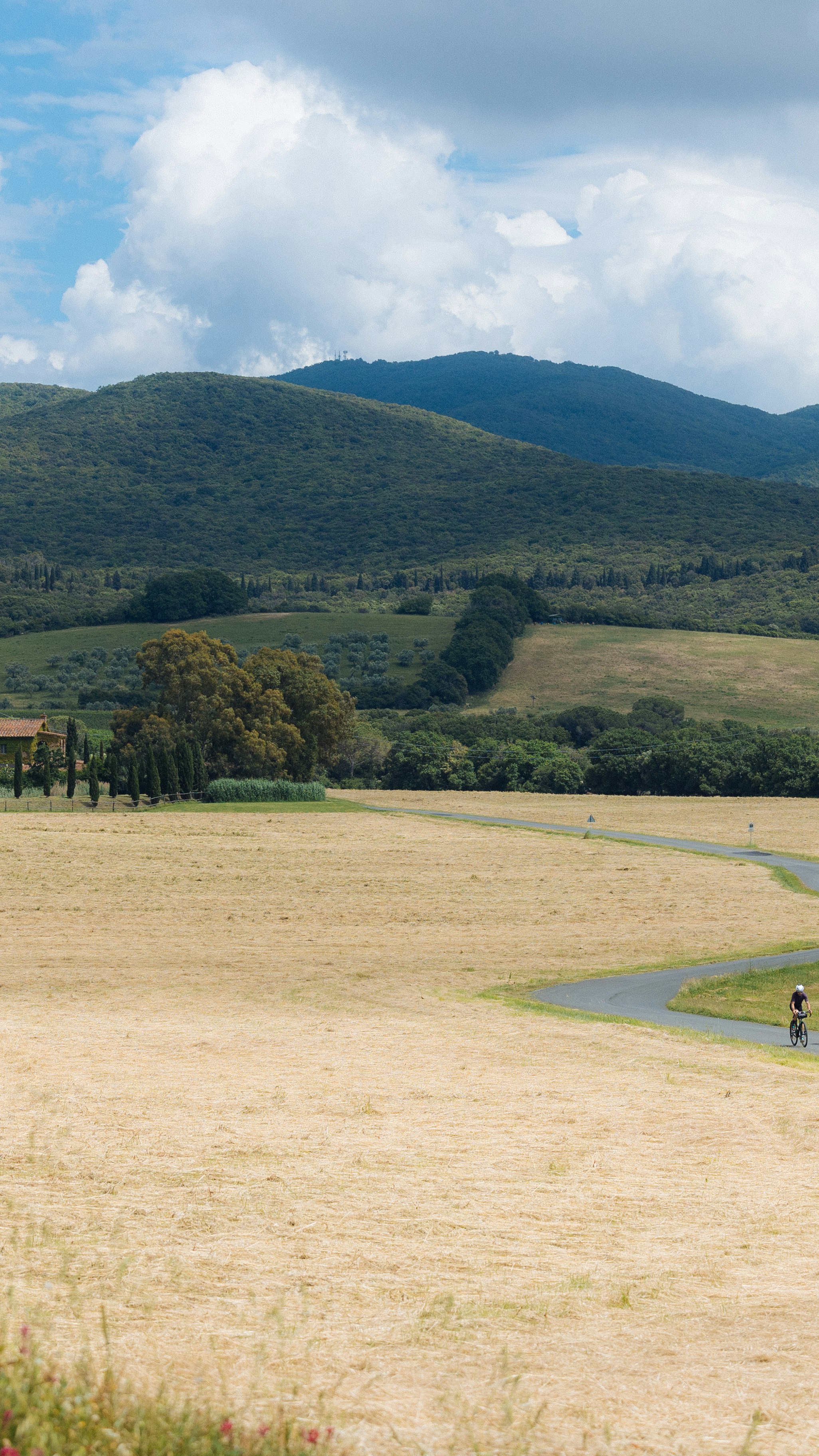
Grey roads with the sea
An unknown Tuscany.
A Tuscany where every pedal stroke is a discovery.
A Tuscany far from the usual clichés, with deep roots. A real Tuscany, with a true Tuscan taste.
Period
Jan - Dec
Elevation difference
3820 m
Total Length
241 km
Duration
3 Days
H
Chiara, a bike-photographer who has moved to the area, is waiting for me in the piazzetta della Vittoria, in the centre of Bibbona. It is small and discreet square, but with a great view of the surrounding countryside: ‘You go from the sea to the hills faster than you can say ‘amen’’ says Chiara as she leads me through the narrow streets of the historic centre. The cobblestones on the ground, the grandmothers sitting in the street, the clothes hung outside the houses in Via Di Mezzo and the parish church of Sant'Ilario have stood there, more or less in identical positions, for years. Time to enjoy a pastry before we set off our first ride.
It is a taste of what we will find over the weekend, assures Chiara, who is already pointing out sights left and right. We are on a scenic road that the local cyclists call La camminata (The walk): Casalvecchio is an incomparable viewing spot, with Casale Marittimo only a few hundred metres away. Part of the surrounding vineyards belong to someone who knows a thing or two about vistas and the good life: the photographer Oliviero Toscani bought some land here and turned it into a farm. He has a motto in life, Toscani, ‘and it is to live in the place where I would always like to take my holidays’: not a bad resolution.
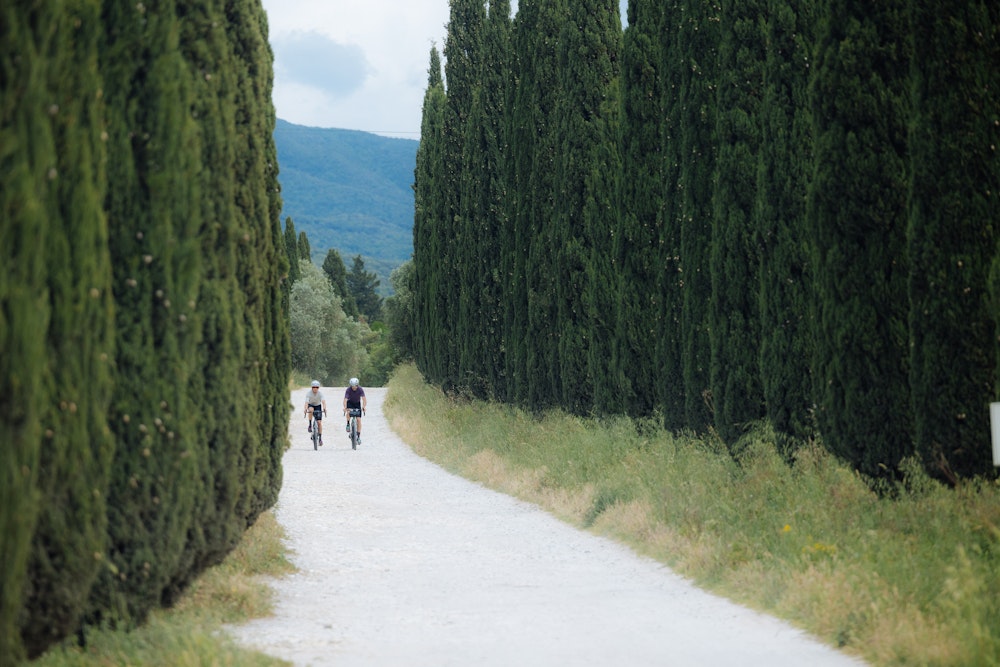
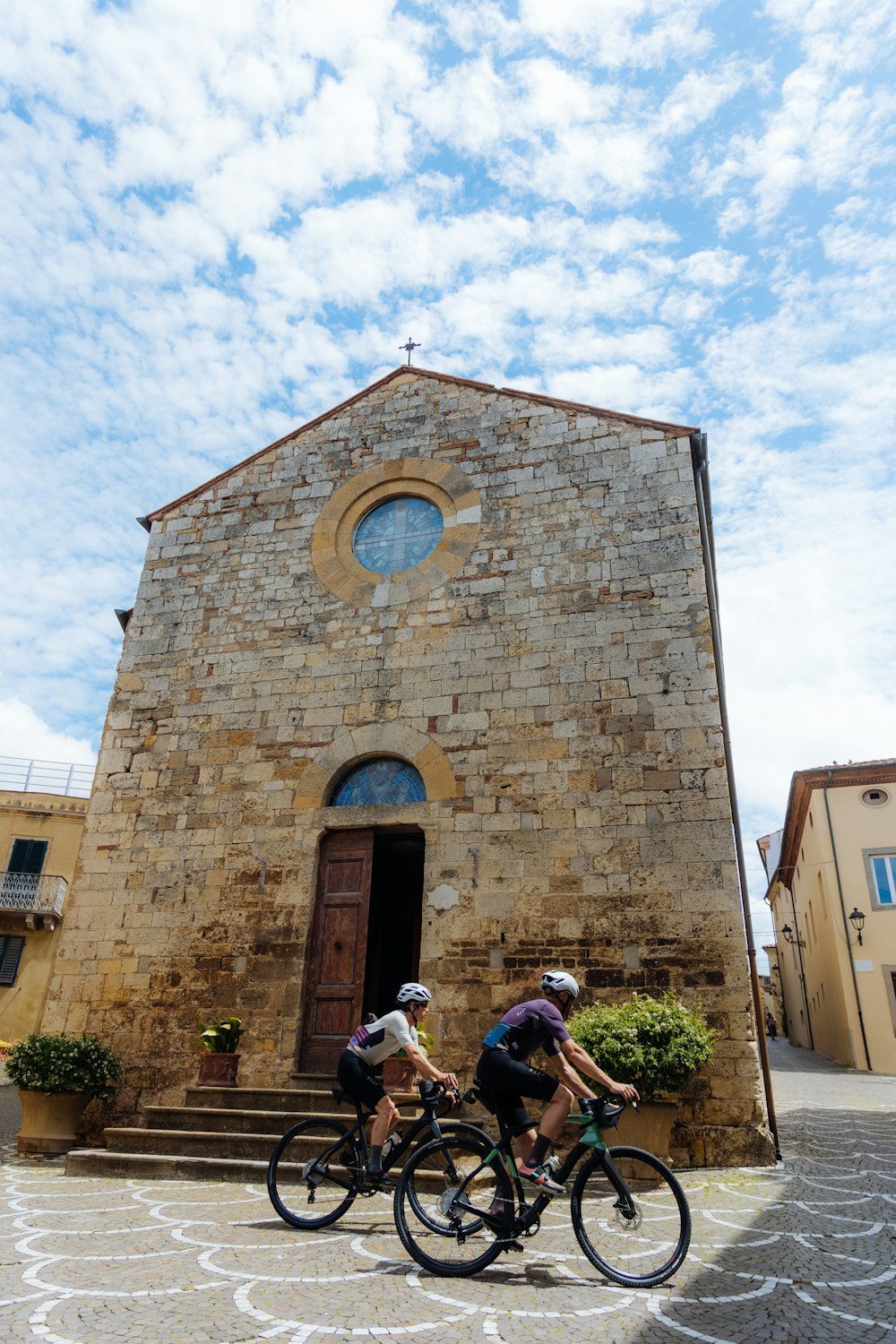
The view extends as far as the three towns in the hills – Casale Marittimo, Guardistallo and Montescudaio – and the typical white colour of the Tuscan gravel, to which we are accustomed because of the famous professional race, is less evident here. In fact, ‘the gravel roads here are actually grey. Grey roads with the sea,' Redaschi clarifies with a smile. As we enter the Macchia della Magona, in fact, we catch some glimpses of the sea, so beautiful that even the Ligurian Cinque Terre pale in comparison.
Every now and then the road gets bouncy. The remains of an ancient Roman road make the ride feel like floating on the pebbles in Pompeii. It is likely that Bibbona and its surroundings have been inhabited since the Villanovan civilisation, but Etruscans & Co. hardly chose the paving with modern bicycles in mind. Yet, the network of roadways, now silver-coloured, now reddish, among which one can get lost, seems to have been made especially for gravel bikes. In the Macchia della Magona they have tidied up the vegetation, the paths are well kept, ‘and soon we will also come across some wild boars,’ says Chiara, reassuring me that they are in a fenced area and anything but dangerous.
Instead, we very rarely meet anyone along the road. Old farms, fields with crops that look like mosaics on the hillsides, views of the islands of Elba, Capraia, Gorgona and even Corsica, the remains of a few charcoal kilns and interpretive signs about flora and fauna follow one another relentlessly. Once used as a reservoir of wood and coal to feed the furnaces of the Magona di Cecina steel complex (from which it takes its name), the Macchia covers over 1600 hectares. It's all up and down, with almost sandy terrain; as I stop to read about the forteto (a type of very thick vegetation of mainly heather, myrtle, holm oak and viburnum) Chiara spots a fallow deer. You can’t let your guard down for a second before nature, all around you, simply happens.
At sunset, the colours are postcard-perfect. After Aione, for the first time we manage to ride on a straight road for about 300 metres: vineyards, trees, a yellowing sky and nothing else until we reach Marina di Bibbona. Here we are to meet Francesco Bettini, Chiara's partner, professional gravel cyclist by day and campsite manager or waiter by night, depending on how you look at it. With Mattia De Marchi, a colleague and friend, they often talk about how perfect this area is for bicycle training: ‘In fact in the early 2000s – Bettini racalls – all the professional teams used to come here to train in winter, a bit like Girona now,’. Son of Sauro and nephew of Paolo, everyone here knows Frank and no more than five minutes pass before someone approaches him to chat about some event or other.
From the kitchen, meanwhile, Frank's mother, aunt and grandmother bring out all kinds of delicacies. I devour the spaghetti with clams while Frank tells of local legends: from the skulls sprouting from some wall – who knows where – in Casale Marittimo, to the Etruscan tombs full of gold found in recent years in Bibbona. Domenico, the grandfather, sits outside: ‘You can be sure that tomorrow morning at 8 o'clock, when we ride past the house, he’ll be working in the vegetable garden. If you come to this area when the masses of tourists have not yet arrived, even in thick darkness it is quite easy to get home, whether you are staying in Bibbona or La California: the roads are practically deserted and a gravel alternative is always available.
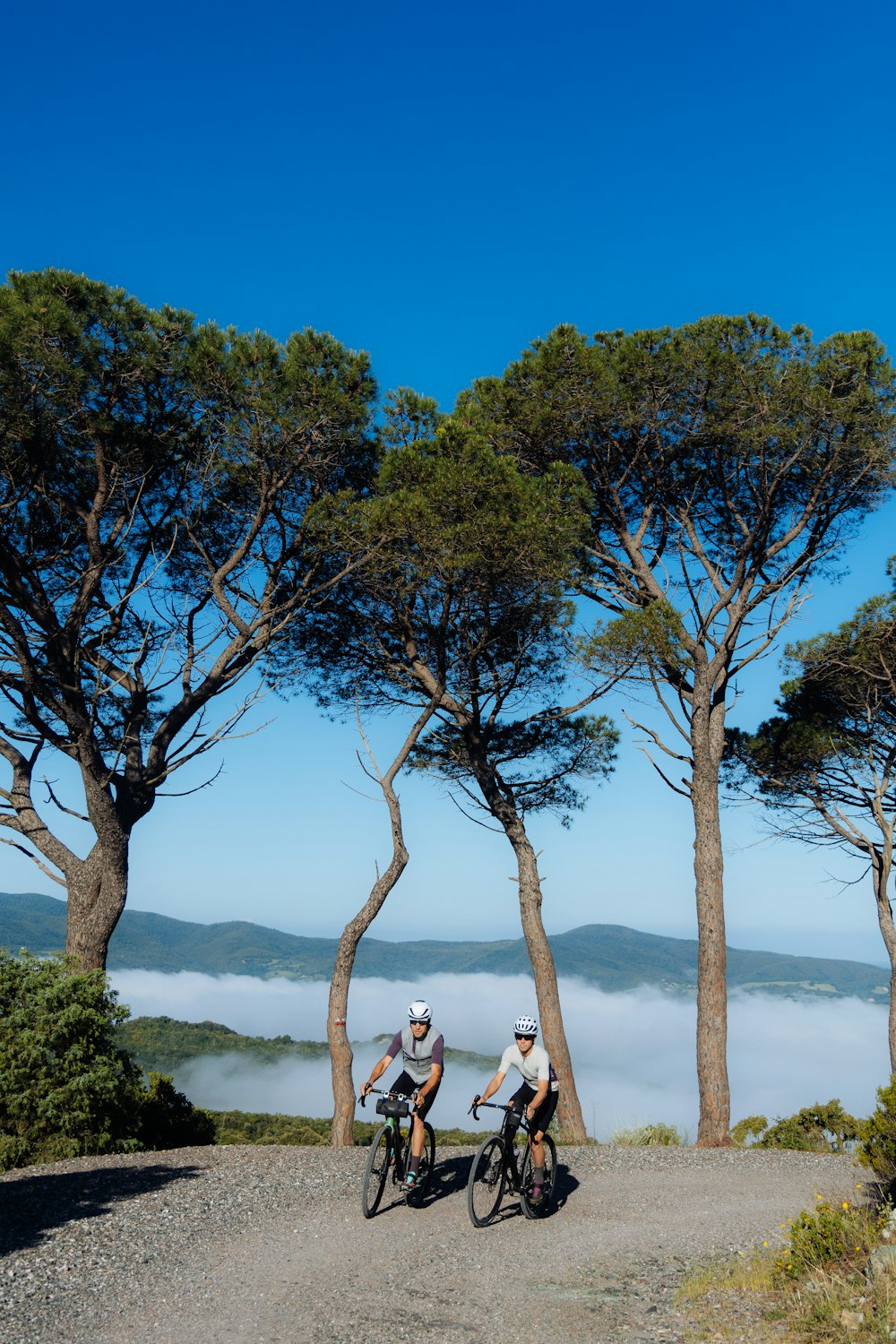
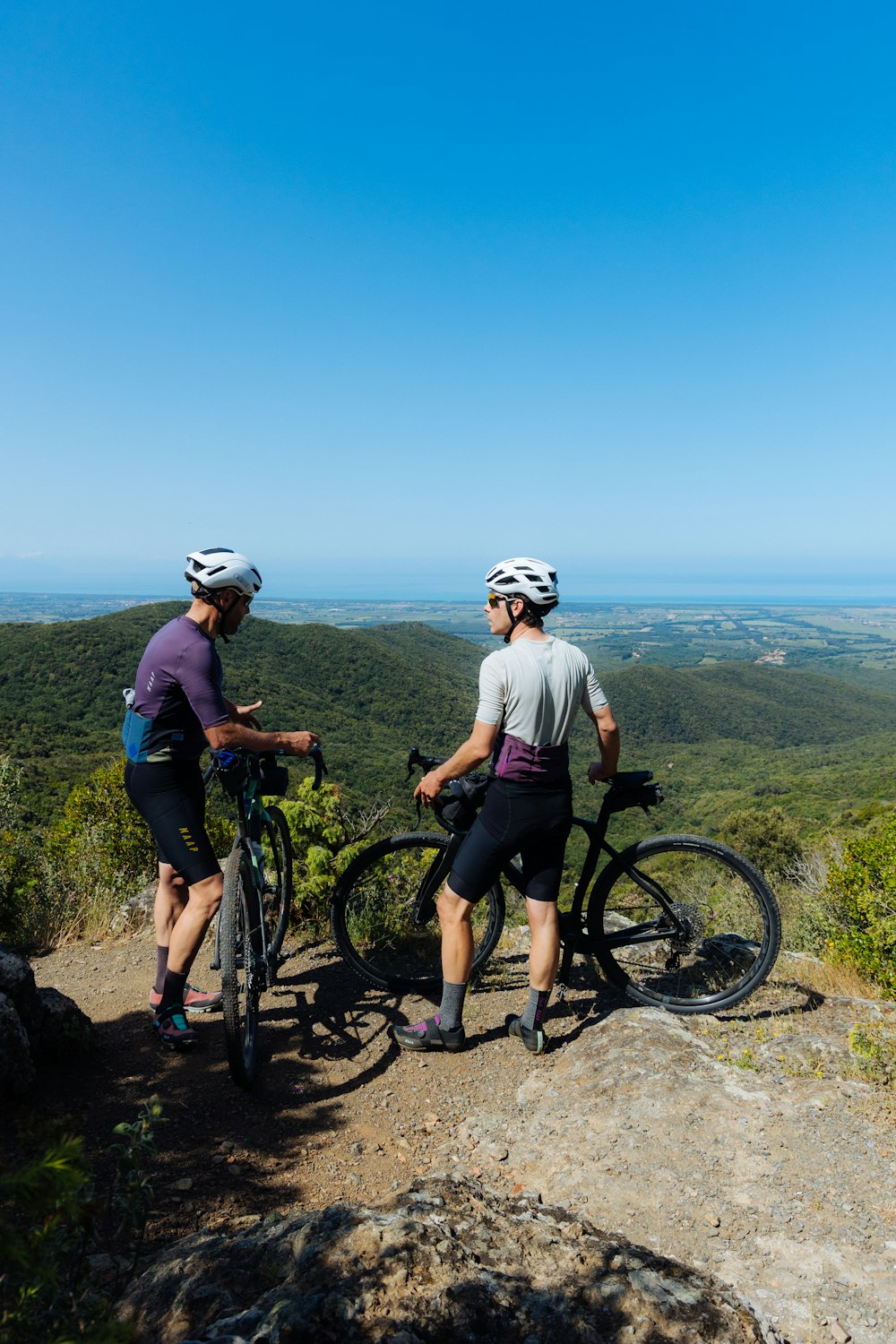
On Saturday and Sunday, we still cycle, of course. The great protagonist, the start of both days itinerates is the coastal pine forest, created to protect the cultivated land from the salty wind. Chiara shows me one of her favourite detours towards the sea, while Frank admits that the natural terrain (soft pine needles and damp earth) is so perfect you can even use a racing bike here.
The two routes on which my private guides take me – Chiara on Saturday, Frank on Sunday – are the medium and long routes of La Mota (named after the word for ‘mud’ in local dialect), a project that aims to make these areas known to a wider public. We cycle for about 200 kilometres in two days, but with so much of it gravel that you forget the asphalt. Saturday is technically the toughest, with a few stretches of portage and broken descents; Sunday is more rolling. ‘You remember yesterday, at the end of the descent from Poggio Rogheta, you saw a little village on the hill opposite?’ asks Frank. I nod, remembering a little village on the other side of the Sterza stream, whose name (Sterza means ‘swerve’ in Italian) is also a warning given the number of bends one has to go around here: ‘Here, every 15th of August, starting with the tolling of the bells at 8am, a hundred or so cyclists take part in an undercover race to get up to the village of Sassa. It’s full of elderly people rooting for the cyclist, and the roads get closed to car traffic...also done undercover,' explains Bettini. A sort of World Cup in the Val di Cecina.
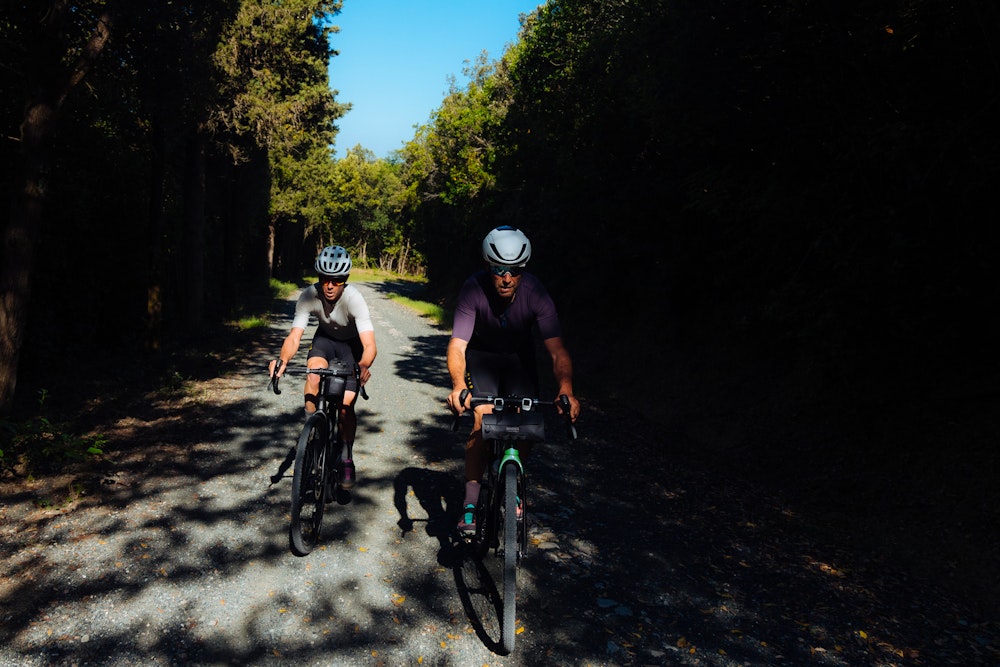
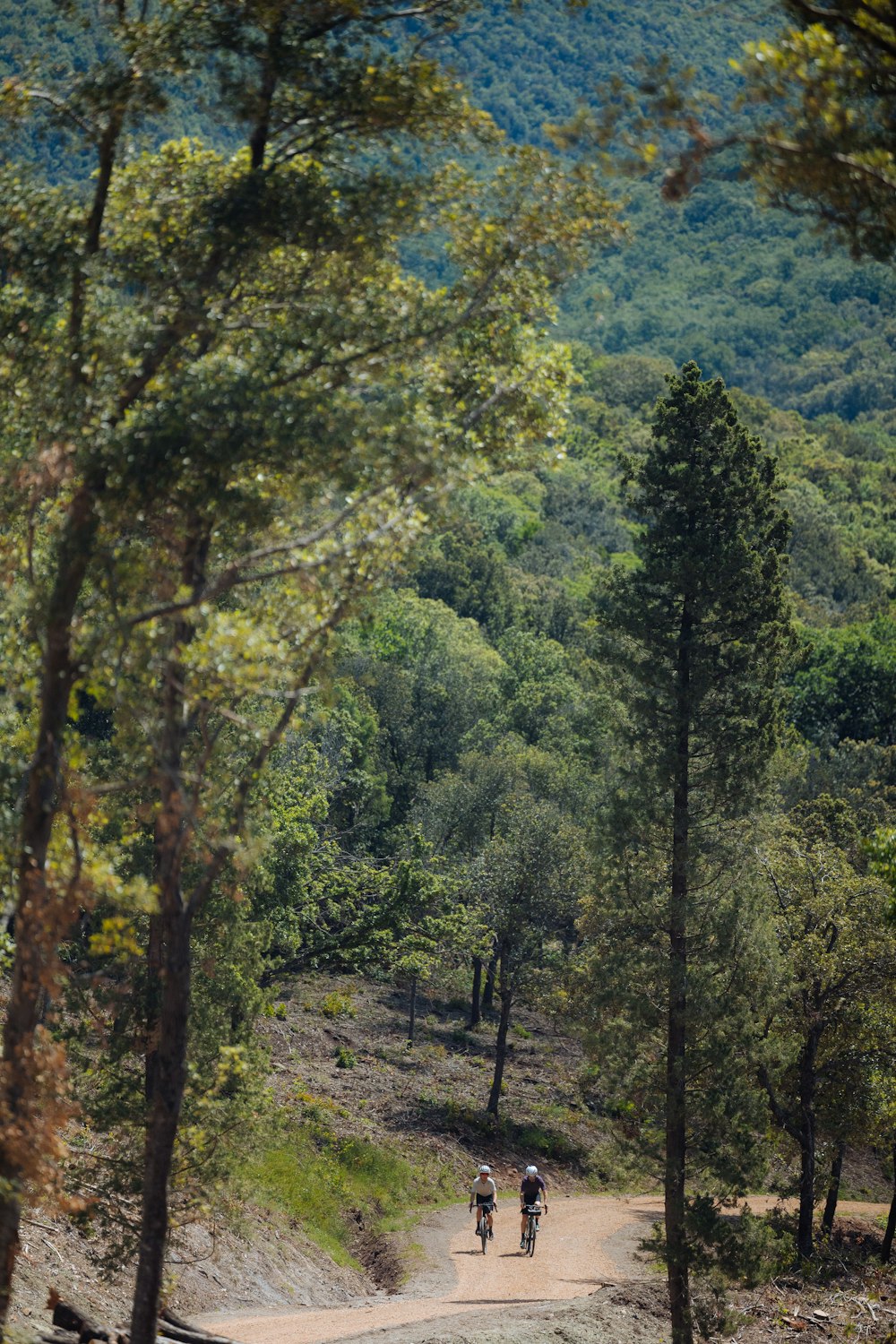
When they are not out riding their bikes around the world or taking photos of people cycling, the two of them can find a little corner of paradise here: ‘the variety of situations’ you find over just a few kilometres, Chiara comments, ‘is surprising and not necessarily with regards to cycling’. Two of the most magical places are the cart track that passes under the wind turbines near Poggio Malconsiglio and the moving hamlet of Querceto. So beautiful that it might seem fake, we reach the hamlet of Querceto just as the waitress of the only bar open, the Circolo ANSPI Querceto, is pulling down the shutters and putting on her scooter helmet. We beg her to give us each an ice-lolly- the heat is getting to us – and walk around the little village that looks like something out of the Instagram profiles of vita_lenta or italy_segreta.
As far as the eye can see, on the slopes around where we cycle, white geysers punctuate the green woods. The areas around Pomarance are used for geothermal energy. From time to time, we have to wade through the botri, rainwater run-off channels that suddenly appear in the countryside and woods. Then Chiara or Frank point to somewhere downhill and say: ‘Here is the mill!’, meaning a windmill located on the top of a hillock and which has become one of the symbols of Bibbona. Actually, I think they mean: ‘Here's home!’.
Finally, on Sunday afternoon, we go back towards the Macchia della Magona. Having passed the small lake of Caselli and a few ophiolite formations, an uphill single track takes us to ‘the best vantage point of all’, as Bettini assures us. And indeed, from the 530 metres or so of Poggio alla Nocca you can see, just to mention one of the sights, the castle of Castiglioncello di Bolgheri, in whose cellars the first bottle of Sassicaia was produced. Time to descend towards Bibbona, but as soon as I grab my bike a prolonged whistle heralds the bad deed: I have punctured a wheel. Over the next two kilometres, we replace the inner tube four times, but something – we can't work out what, despite careful research – keeps puncturing. Till we eventually run out of tubes.
We need to split up. Frank continues towards Bibbona, while I push my bike all the way out of the Magona. This being a nature reserve, I can't be picked up by car here. We have already cycled a hundred kilometres, with almost 2,000 metres of altitude difference, it is two o'clock in the afternoon and there is no more water or food. My phone has no reception. Half dead, in an hour and a half under the midday sun I reach the cemetery of Bibbona, at whose rusty fountain I drink like it was an oasis in the desert. Then, in the town centre, I pull myself together: while I'm eating a focaccia, an idea flashes through my mind. I could ask Frank to pick me up, but with no rush, hours from now. So, I hide my bike in some cranny in Bibbona and return to the Magona on foot, alone, to enjoy its silence and solitude. Among other things, the Magona also perfectly fits for the expression ‘darsi alla macchia’ (literally ‘fleeing to the scrub’ as in going into hiding). It is used above all in a figurative sense, indicating sudden and disorganized forms of escape.
Those who ‘flee to the scrub’ want to lose their tail, hiding in a middle earth where they will not be found, more or less metaphorically. I too ‘fled to the scrub’, in the proper sense of giving myself up, entrusting to nature a staggering and exhausted body. I found a bench to lie down on and fell asleep, still in full cycling attire. And it was in the Macchia della Magona, one Sunday afternoon, that I experienced the most naive and carefree hours of my life as a cyclist.
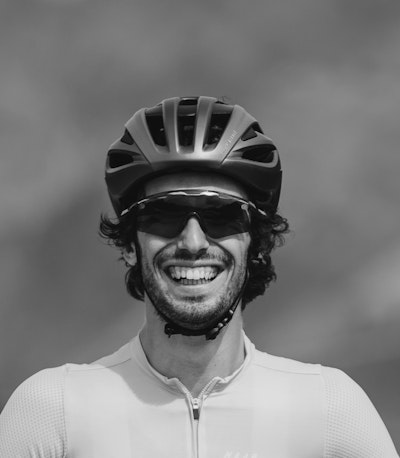
Texts
Michele Pelacci
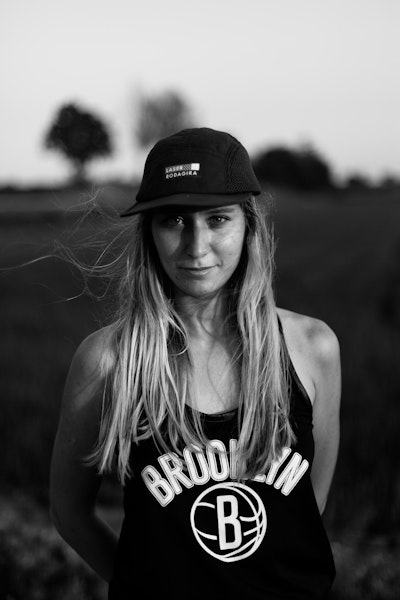
Photos
Chiara Redaschi
Cycled with us
Alessandro Dondi, Elia Poletti
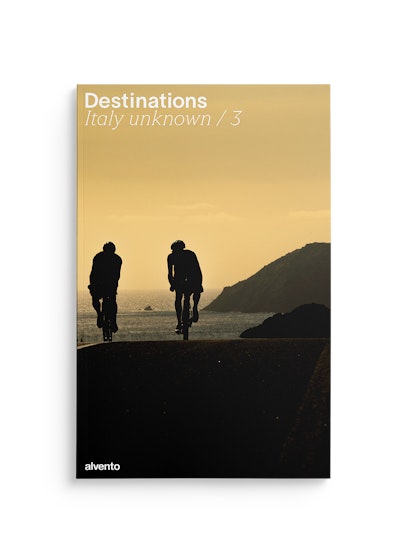
This tour can be found in the super-magazine Destinations - Italy unknown / 3, the special issue of alvento dedicated to bikepacking. 9 little-trodden destinations or reinterpretations of famous cycling destinations.
